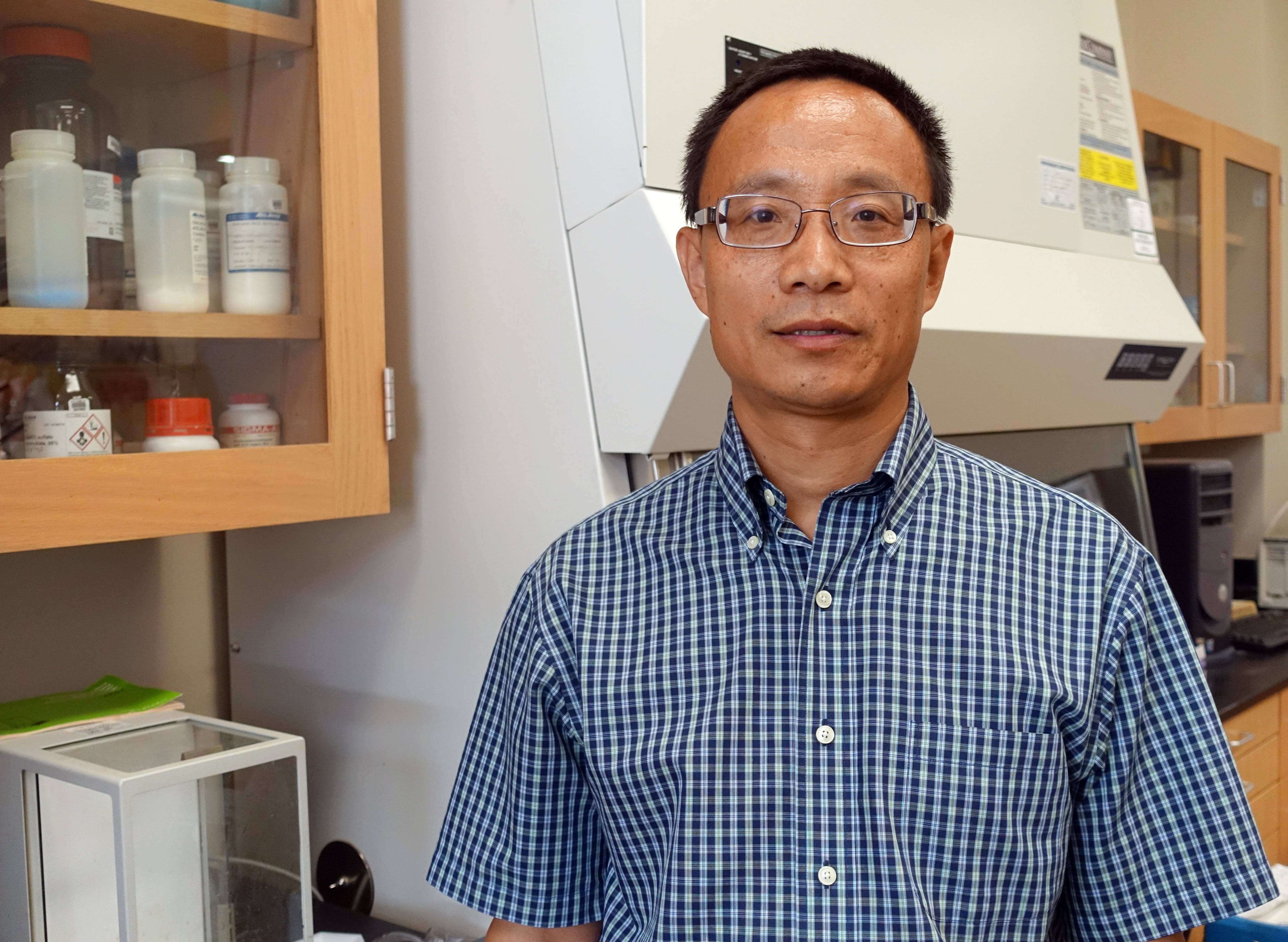UTA researcher using nanotechnology to target inoperable tumors from the inside out
Many solid tumors are considered inoperable because they adhere to vital structures or the surgery would cause irreversible damages to the patients. In order to prevent the tumor growth or provide complete tumor resolution without surgery, chemotherapy and radiation are currently in clinical practice.

Unfortunately, severe adverse side effects are usually associated with these therapeutic methods. Since these tumors are already locally advanced or have begun to metastasize, the outlook today for these cancer patients is bleak and survival rate remains very low.
Yaowu Hao, an associate professor in the Materials Science and Engineering Department at The University of Texas at Arlington, has earned a three-year, $477,000 R15 grant from the National Institutes of Health to develop radiotherapeutic nanoseeds that will work from inside inoperable solid tumors and cause less damage to healthy cells.
The research also was featured in a Scientific Reports paper published earlier this year titled “Theranostic Nanoseeds for Efficacious Internal Radiation Therapy of Unresectable Solid Tumors.”
Inoperable solid tumors are often targeted with radiation. One way of applying the radiation is to surgically implant a 2-millimeter-by-5-millimeter “seed” with therapeutic isotopes into the tumor. Two millimeters is about seven one-hundredths of an inch.
This procedure is highly invasive and can only be used in certain parts of the body – usually the prostate – because of the damage caused by the implantation process and the fact that a foreign object remains inside the patient’s body after treatment.
Instead, Hao has developed biocompatible nanoseeds that are injectable with a very small needle and cause limited trauma to surrounding tissue. Because the nanoseeds are injectable, they can be used in tumors in other areas of the body, such as the brain, lungs and liver.
“Our main breakthrough is the development of uniquely coated gold nanoparticles that act as a carrier for the radioactive isotopes,” Hao said. “We chose gold because it is inert and biocompatible. The nanoseed is about 100 nanometers in size, so it is small enough to be injected in solution but large enough that it will not spread out of the tumor.”
This type of radiation therapy is highly effective in attacking a tumor, but is also safer for the surrounding tissue because the radiation is contained within the tumor.
Hao said another benefit is that because the seeds are injectable, it is much easier to control the radiation dosages.
Stathis Meletis, chair of UTA’s Materials Science and Engineering Department, says that Hao’s grant is an excellent example of UTA’s emphasis on health and the human condition contained within the Strategic Plan 2020: Bold Solutions | Global Impact.
“Dr. Hao has discovered a breakthrough in cancer treatment that could have far-reaching benefits. This grant will allow him to build upon his preliminary results and develop a treatment method that is aggressive and effective in eliminating tumors,” Meletis said.
Hao joined UTA in 2005 following a postdoctoral fellowship at Johns Hopkins University. His research focuses on synthesis, characterization and applications of metal and magnetic nanostructures.
Several other UTA engineering faculty are also working on cancer-related research, including:
- Samir Iqbal in electrical engineering and bioengineering has developed a novel cancer cell detection method that will improve early diagnosis through a tool that tracks cellular behavior in real time using nanotextured walls that mimic layers of body tissue.
- Liping Tang in bioengineering is using tissue-engineered artificial lymph nodes to attract prostate cancer cells to better target and eradicate the disease. He is also part of a team including researchers from UTA’s College of Science, UT Southwestern and MD Anderson Cancer Center that is developing a multifunctional platform that can integrate imaging and photo-induced cancer therapy in a single, portable device.
- Kytai Nguyen in bioengineering developed a novel cancer cell-selective nanoparticle system that can both target for imaging and drug delivery to detect and cure prostate cancer.
- J.-C. Chiao of electrical engineering developed a microfluidic device to predict cancer metastasis risk. Using prostate cancer patients’ own blood, the device can find out the risk of cancer becoming metastatic.
— Written by Jeremy Agor
About The University of Texas at Arlington
The University of Texas at Arlington is a Carnegie Research-1 “highest research activity” institution of about 55,000 students in campus-based and online degree programs and is the second-largest institution in The University of Texas System. U.S. News & World Report ranks UTA fifth in the nation for undergraduate diversity. The University is a Hispanic-Serving Institution and is ranked as the top four-year college in Texas for veterans on Military Times’ 2016 Best for Vets list. Visit www.uta.edu to learn more, and find UTA rankings and recognition at www.uta.edu/uta/about/rankings.php.
For more on the Strategic Plan, see Strategic Plan 2020: Bold Solutions | Global Impact.